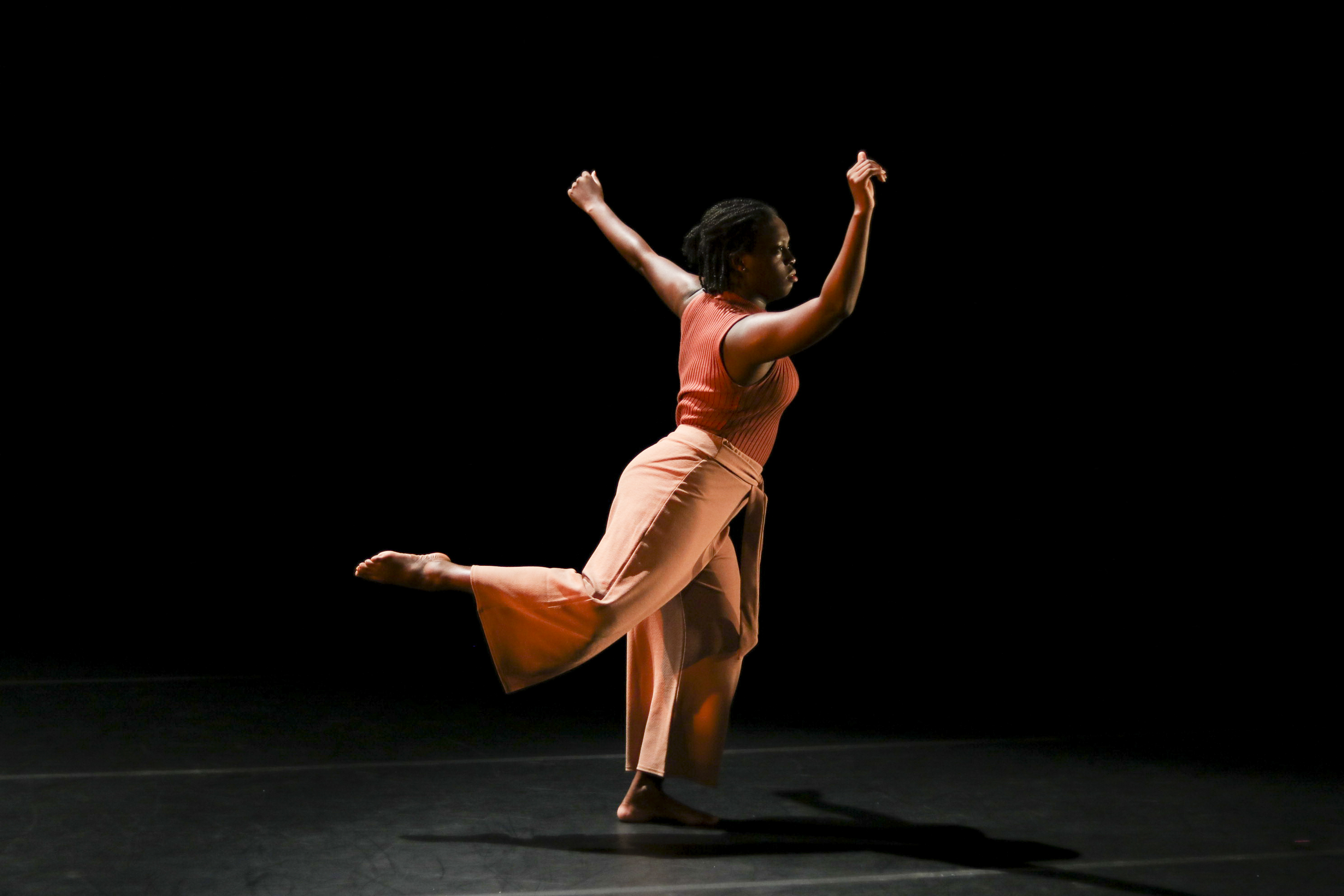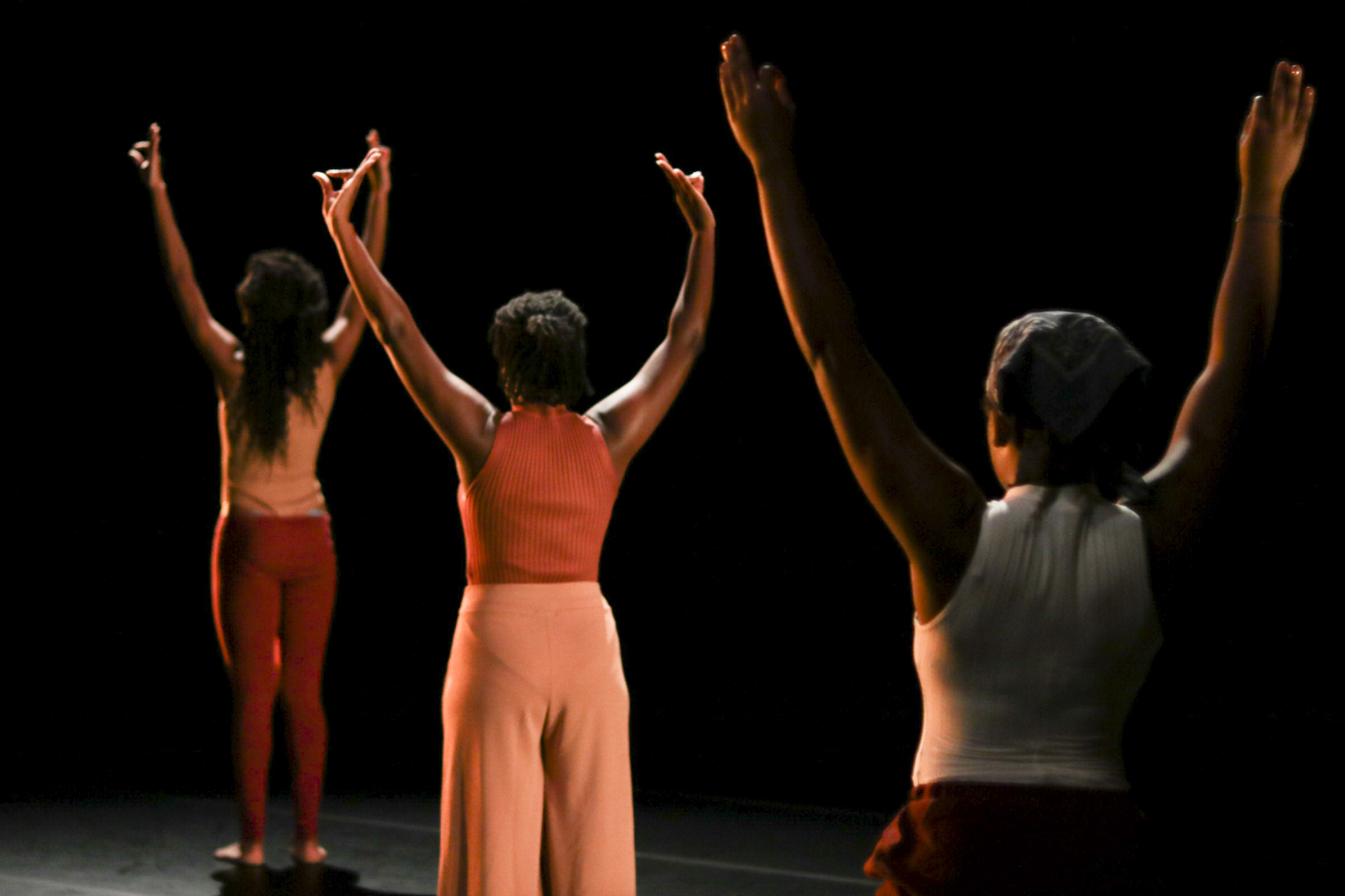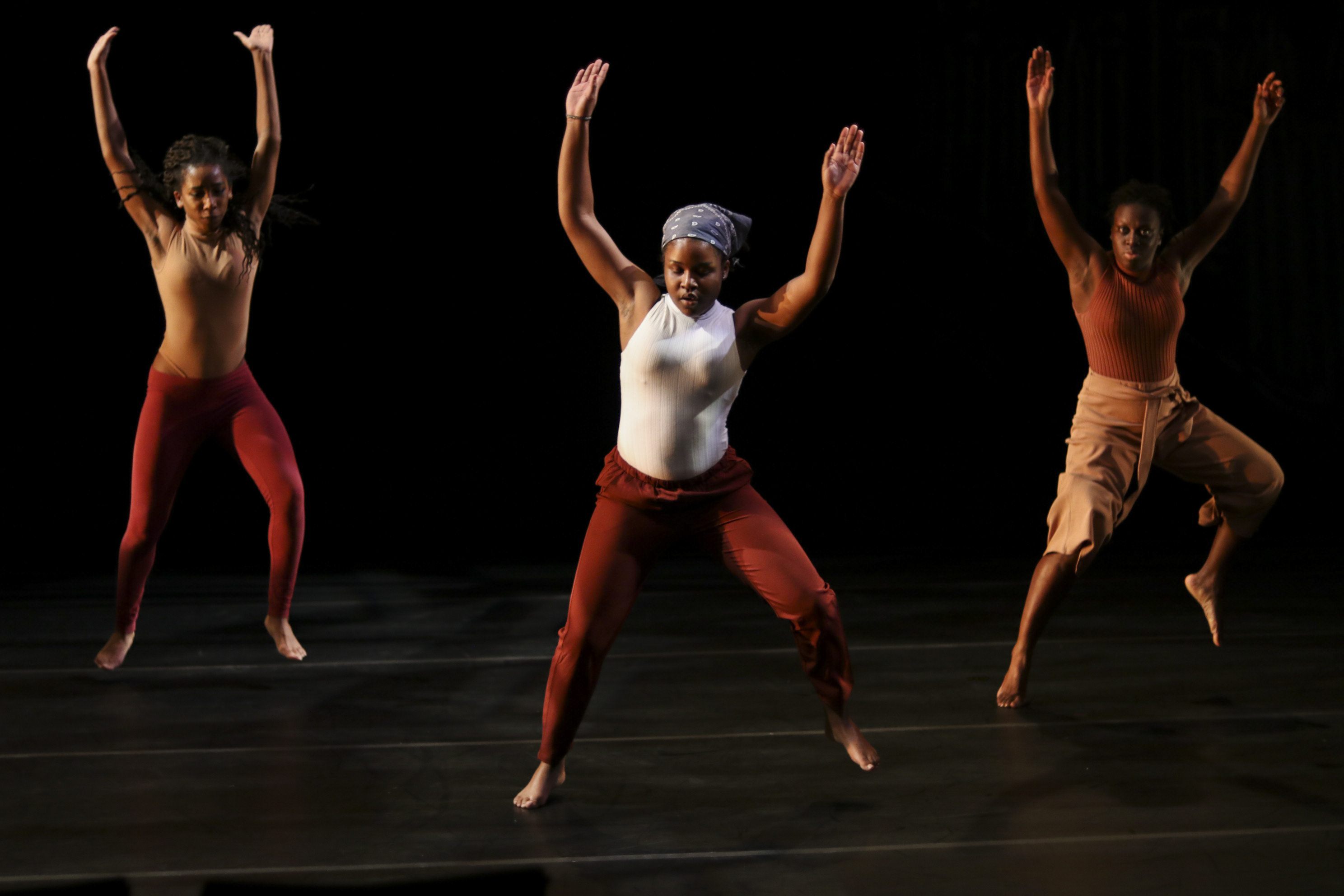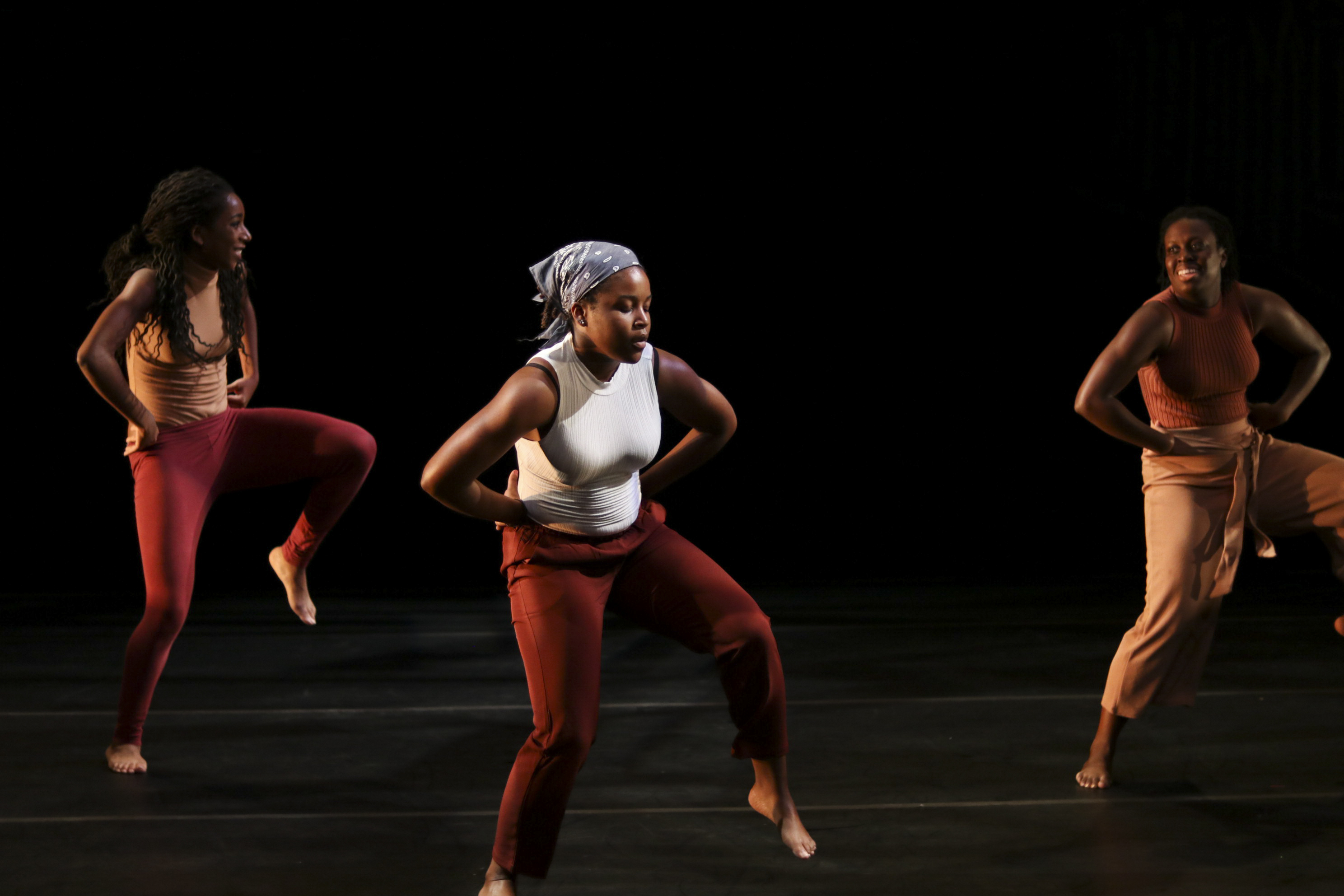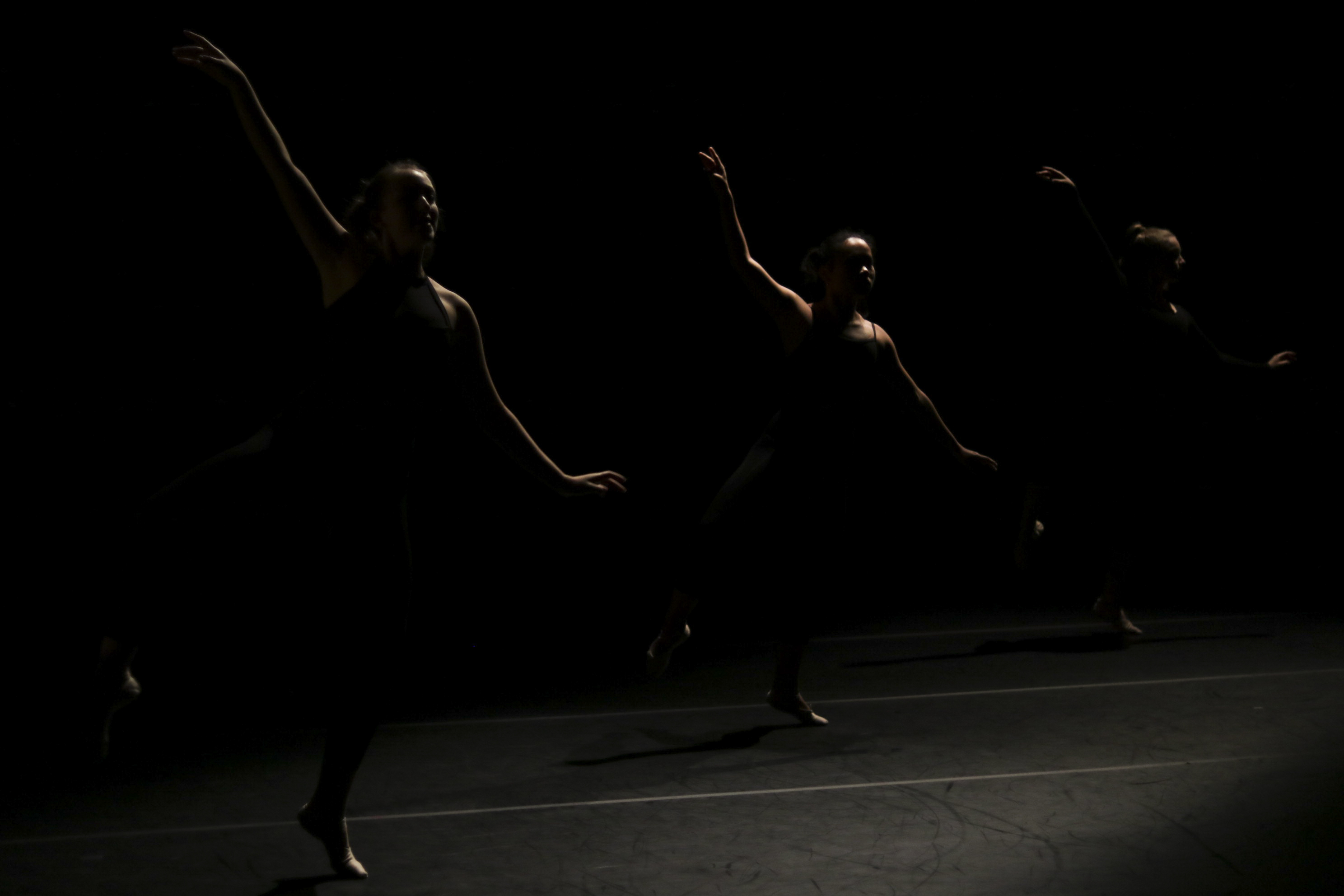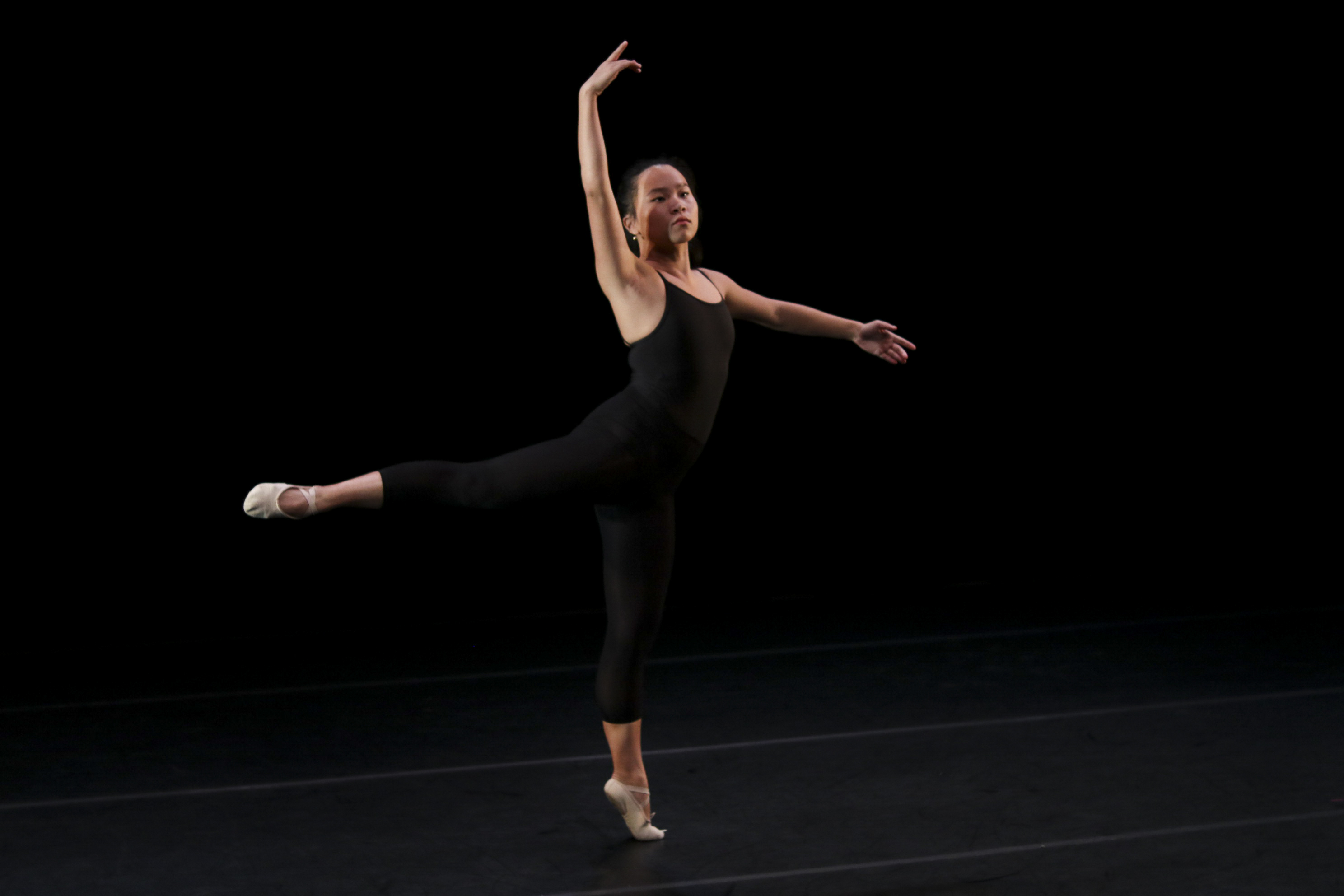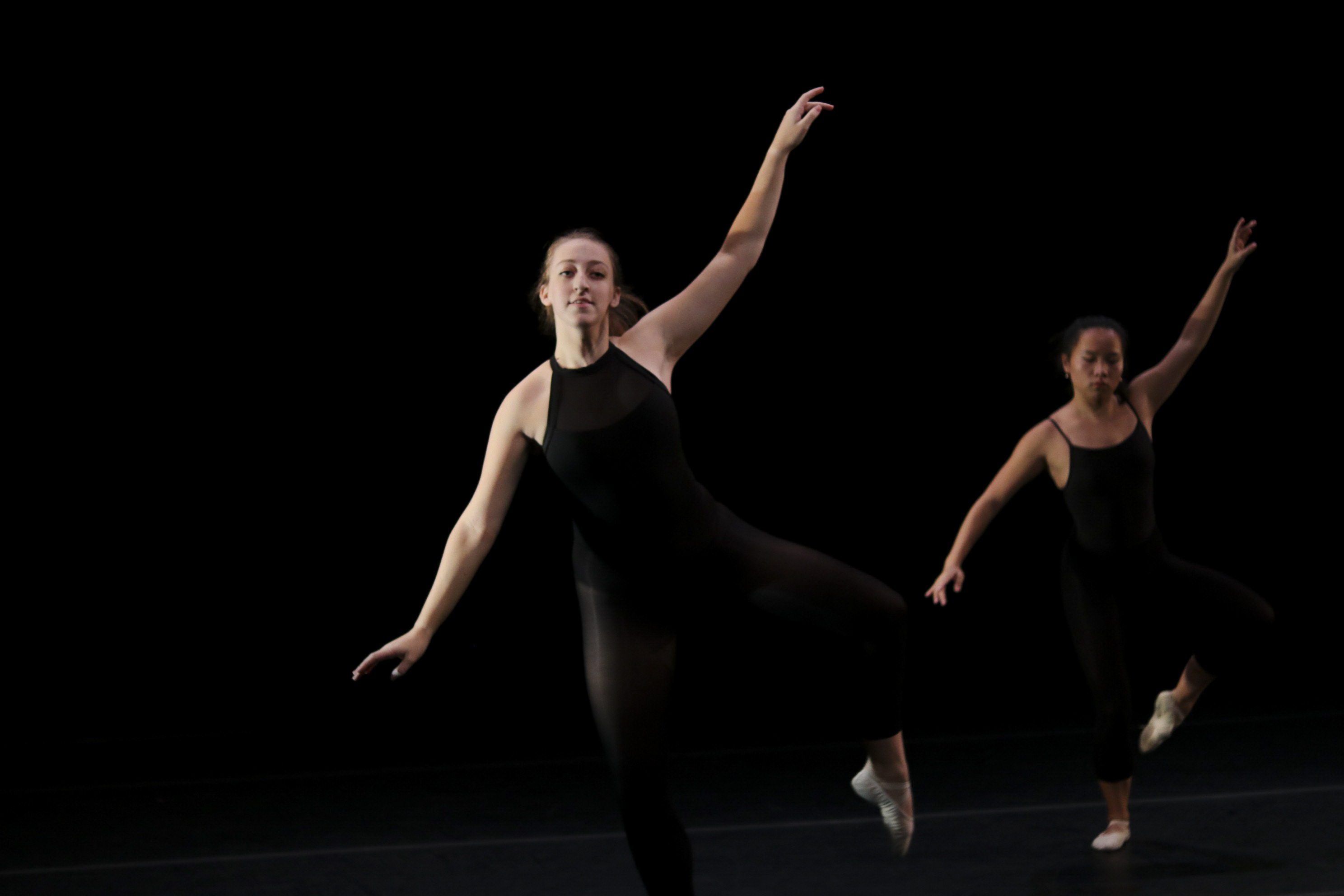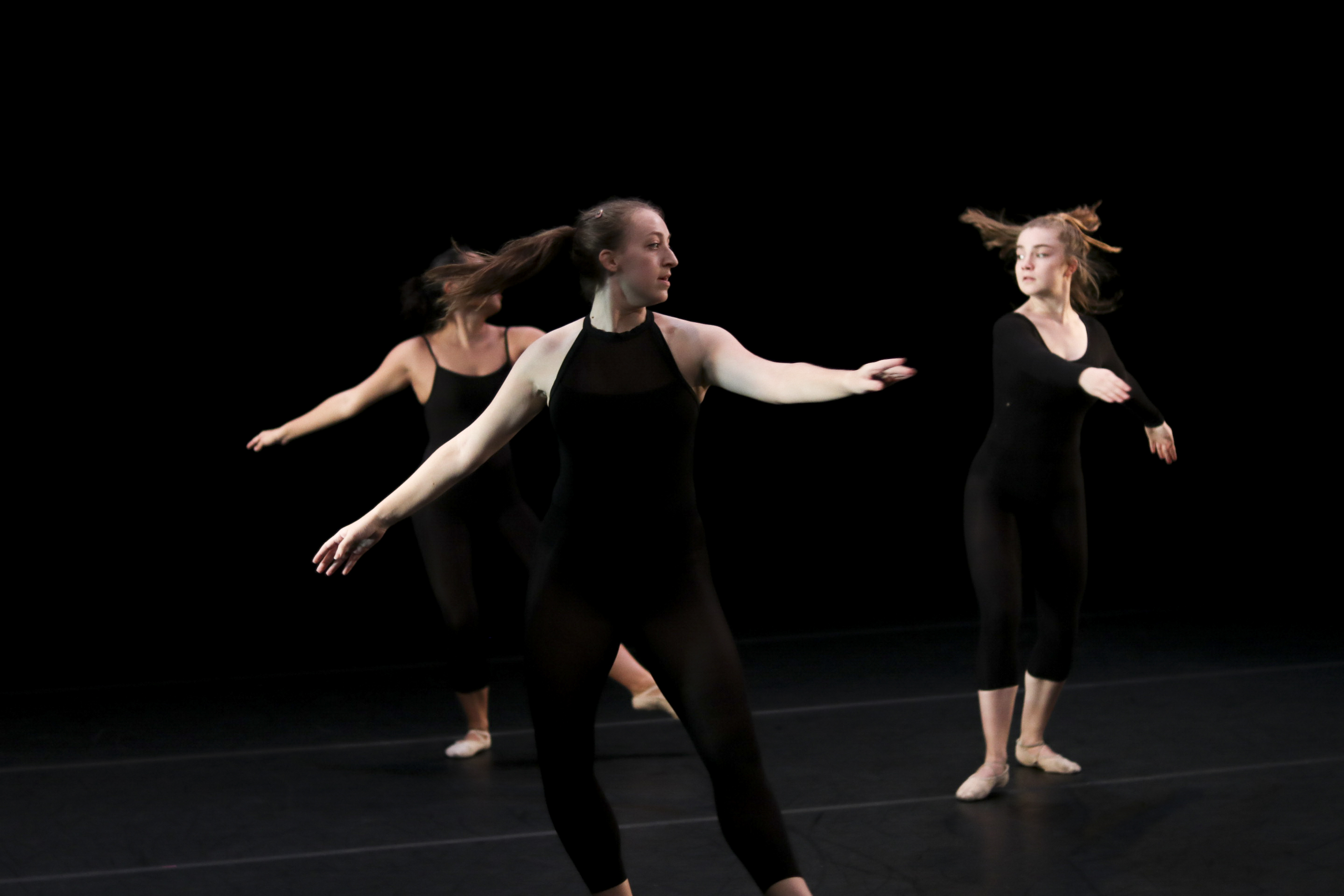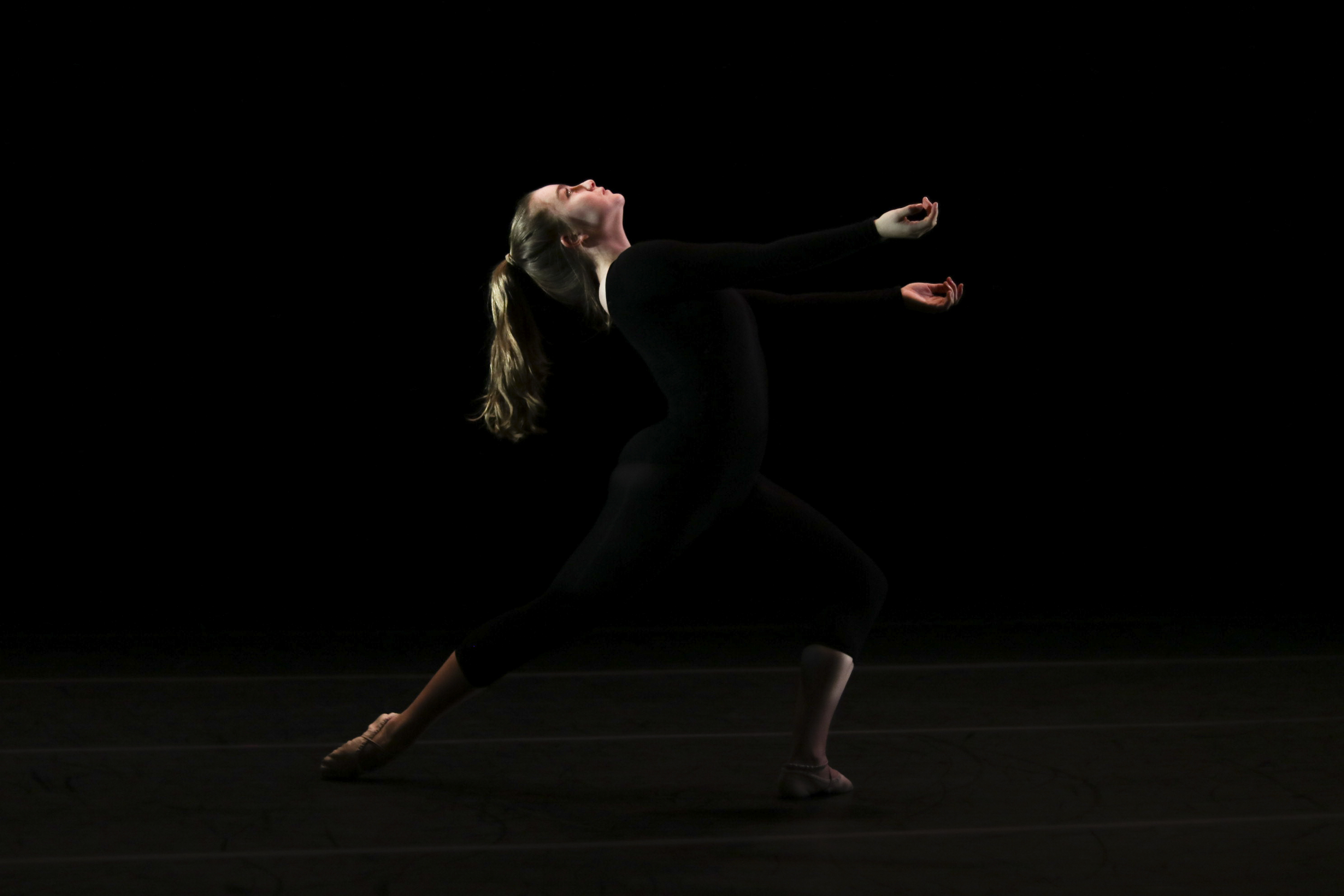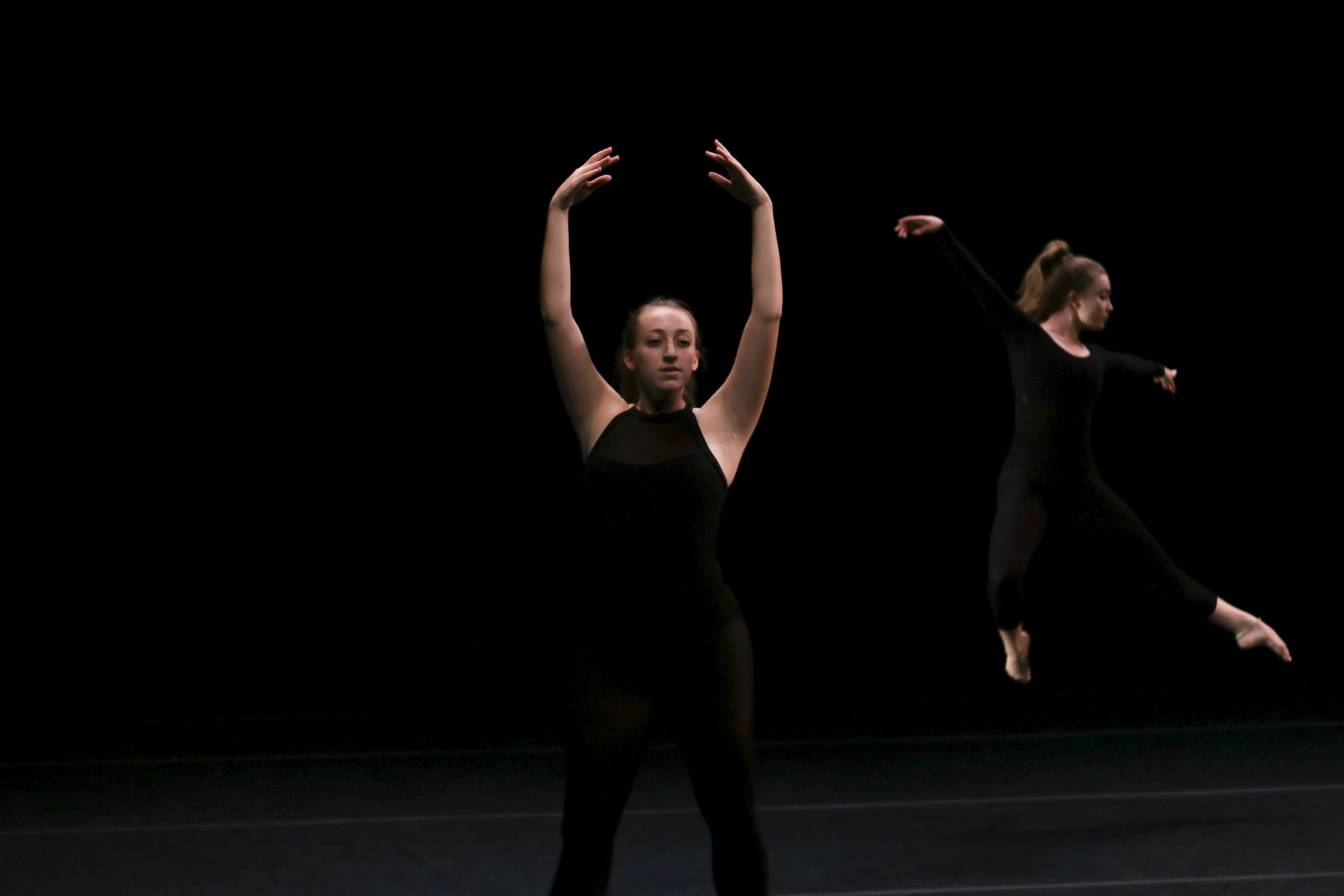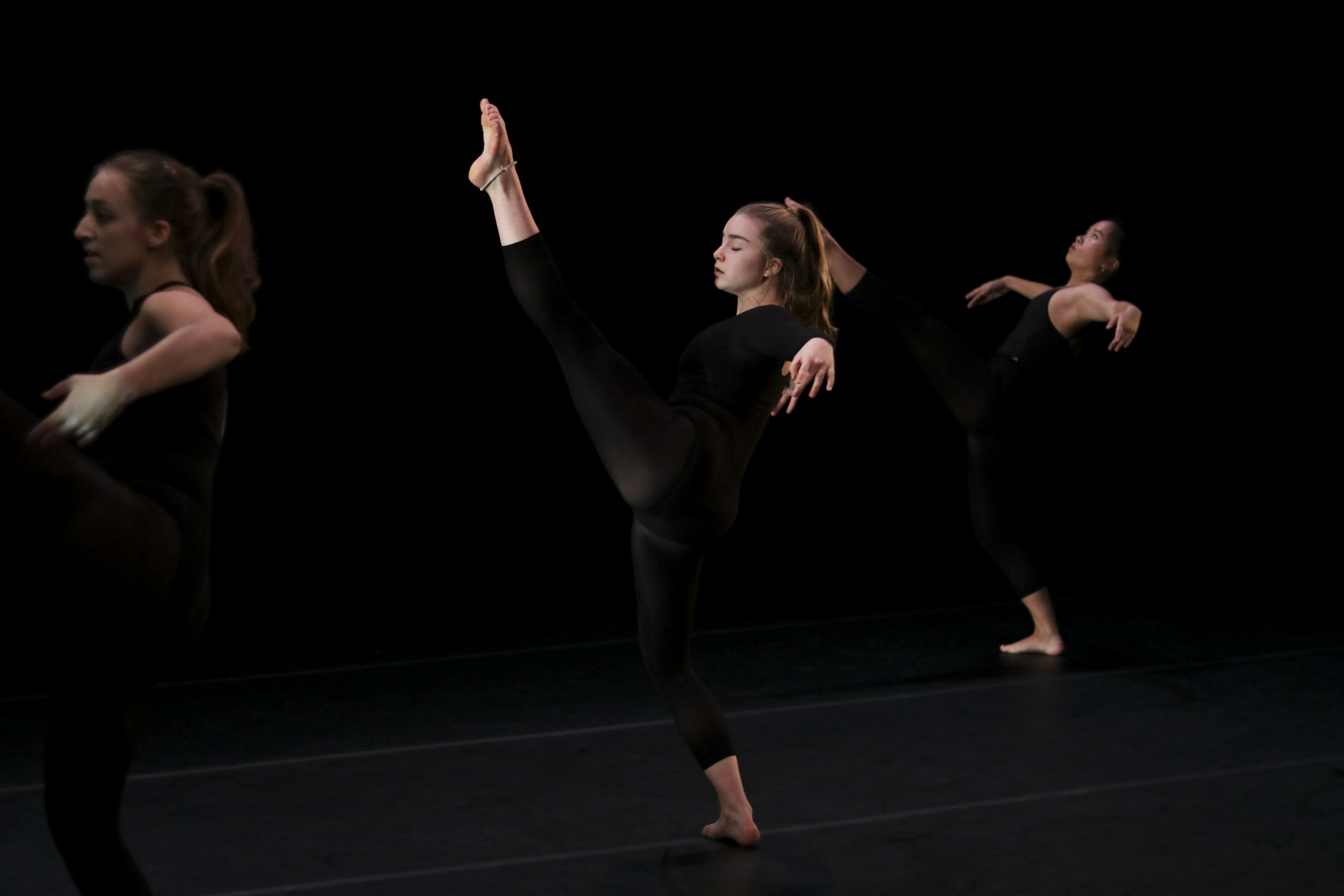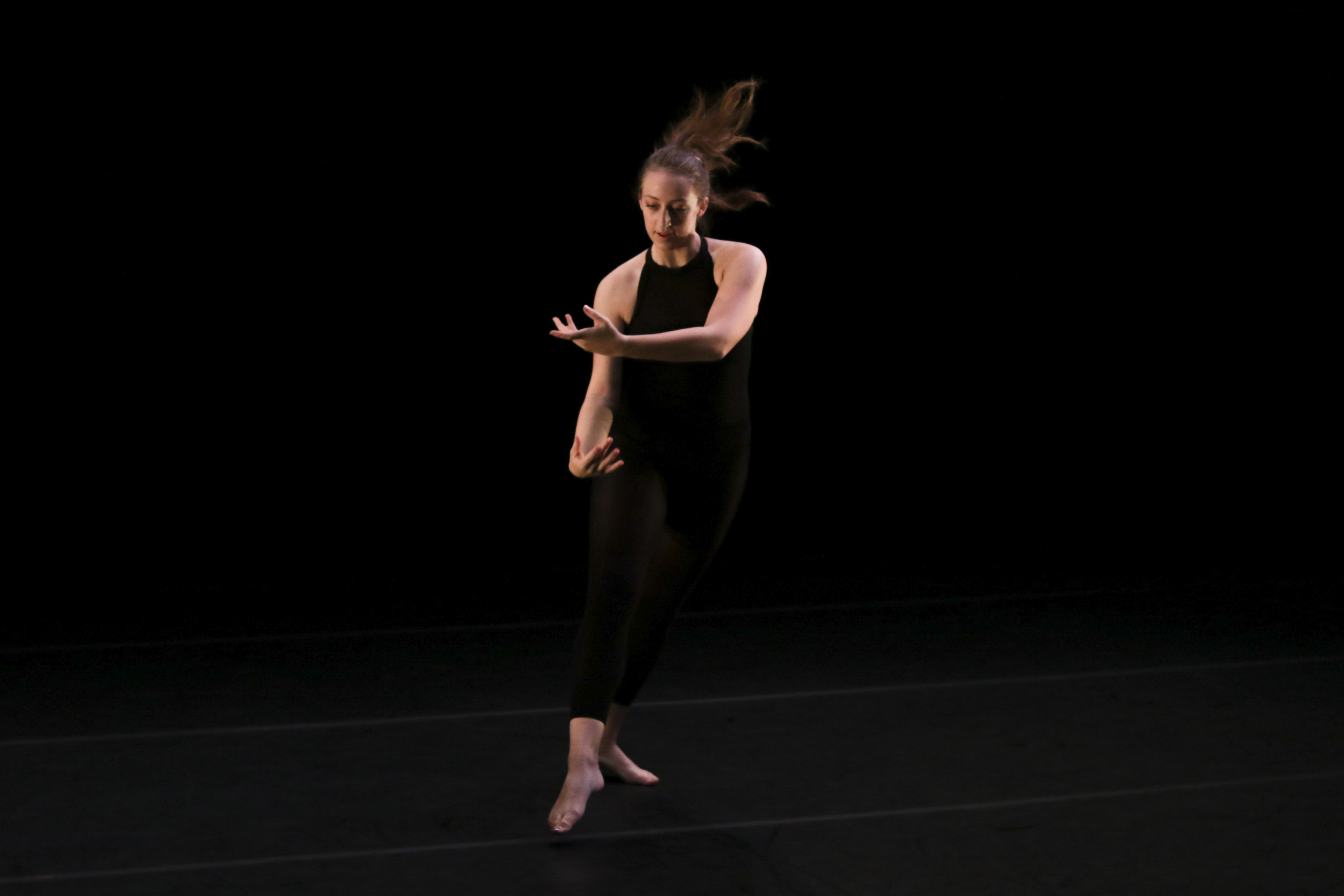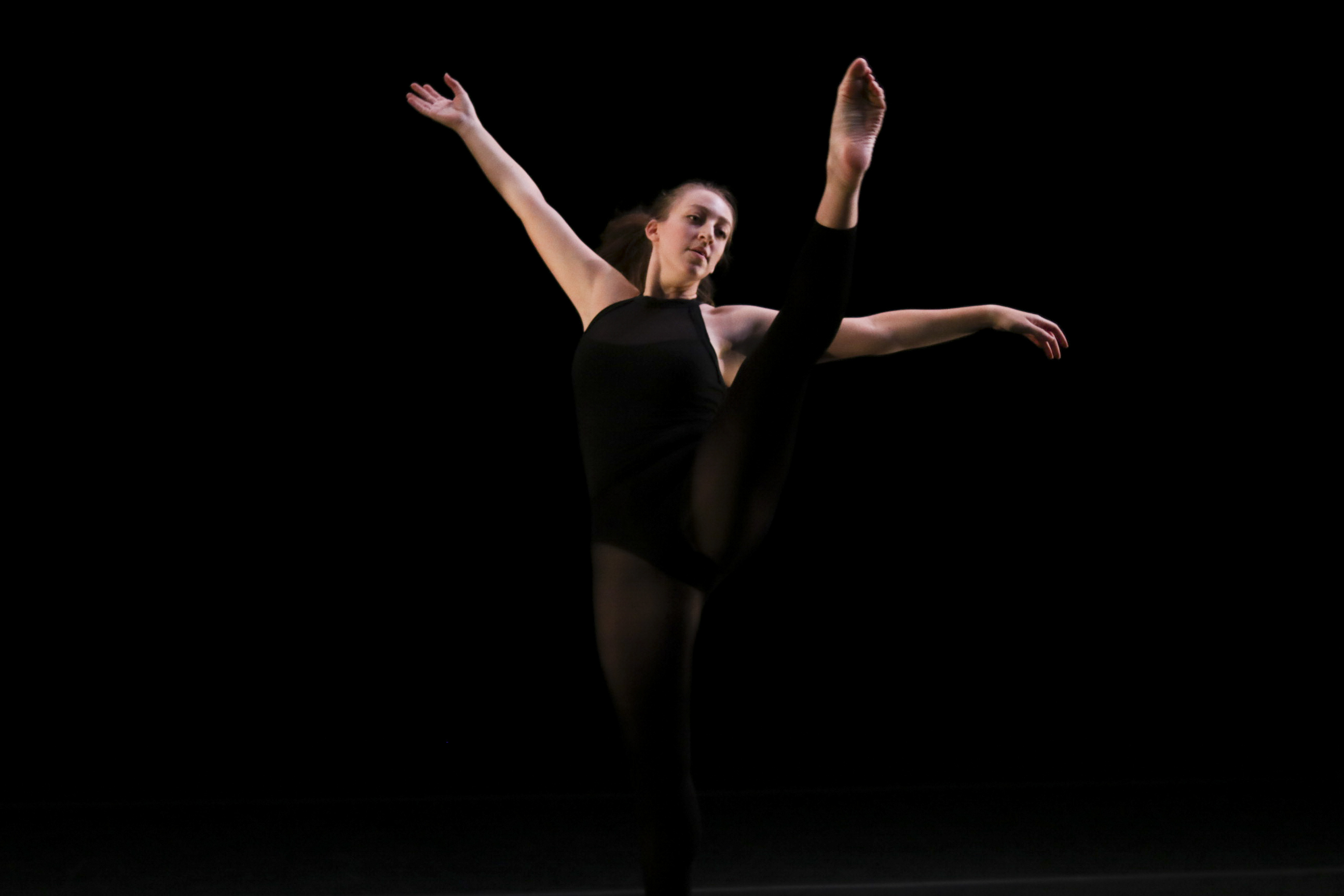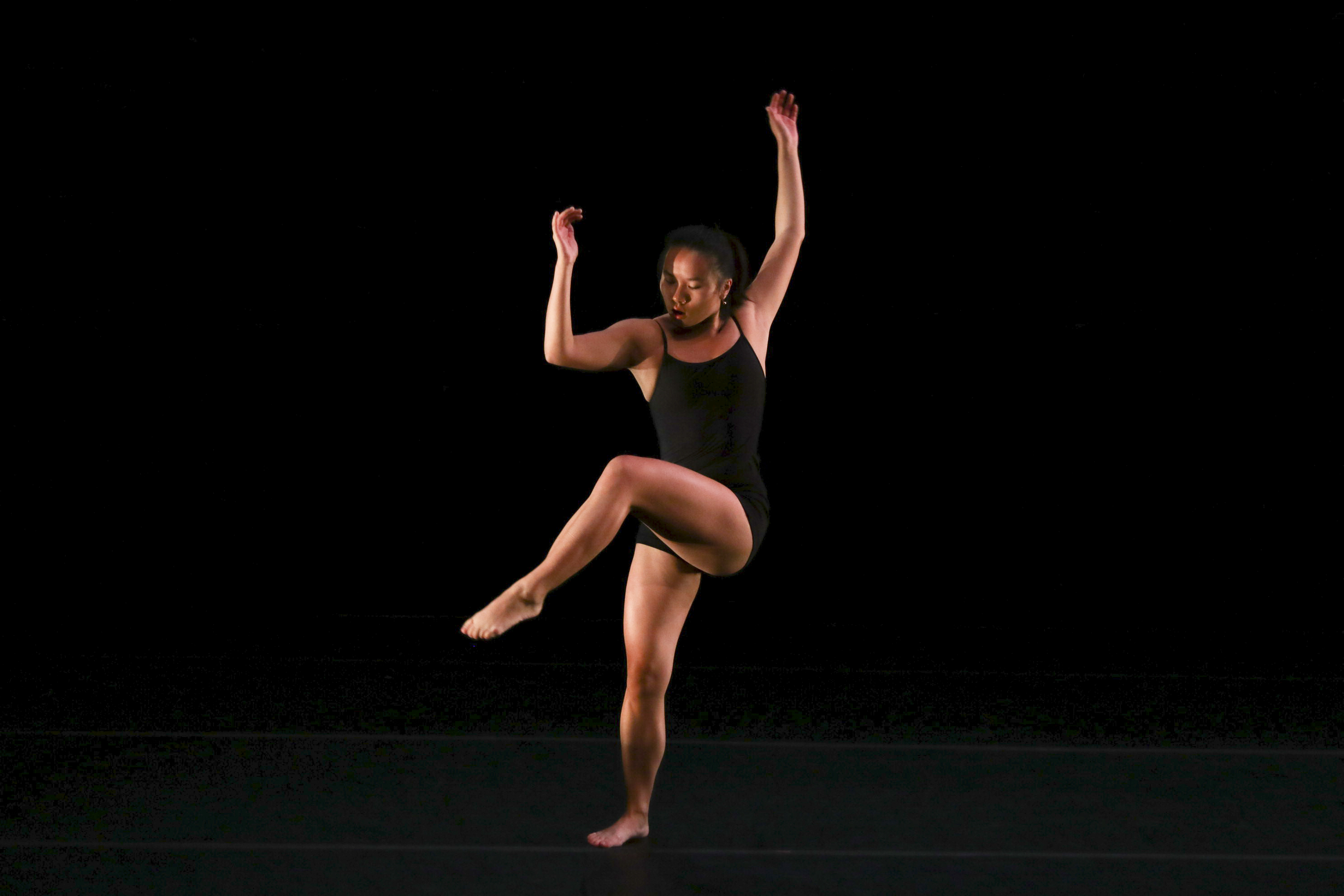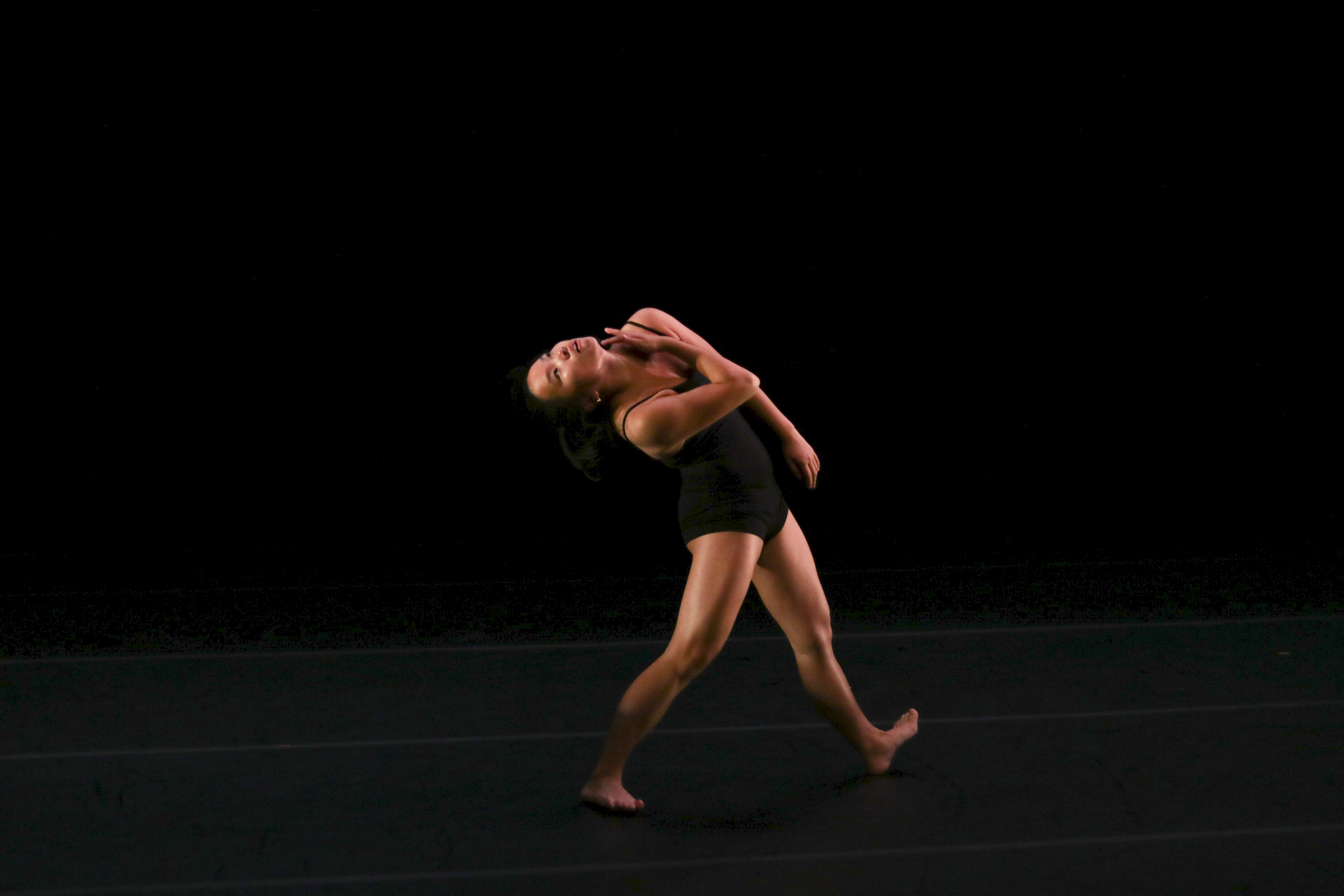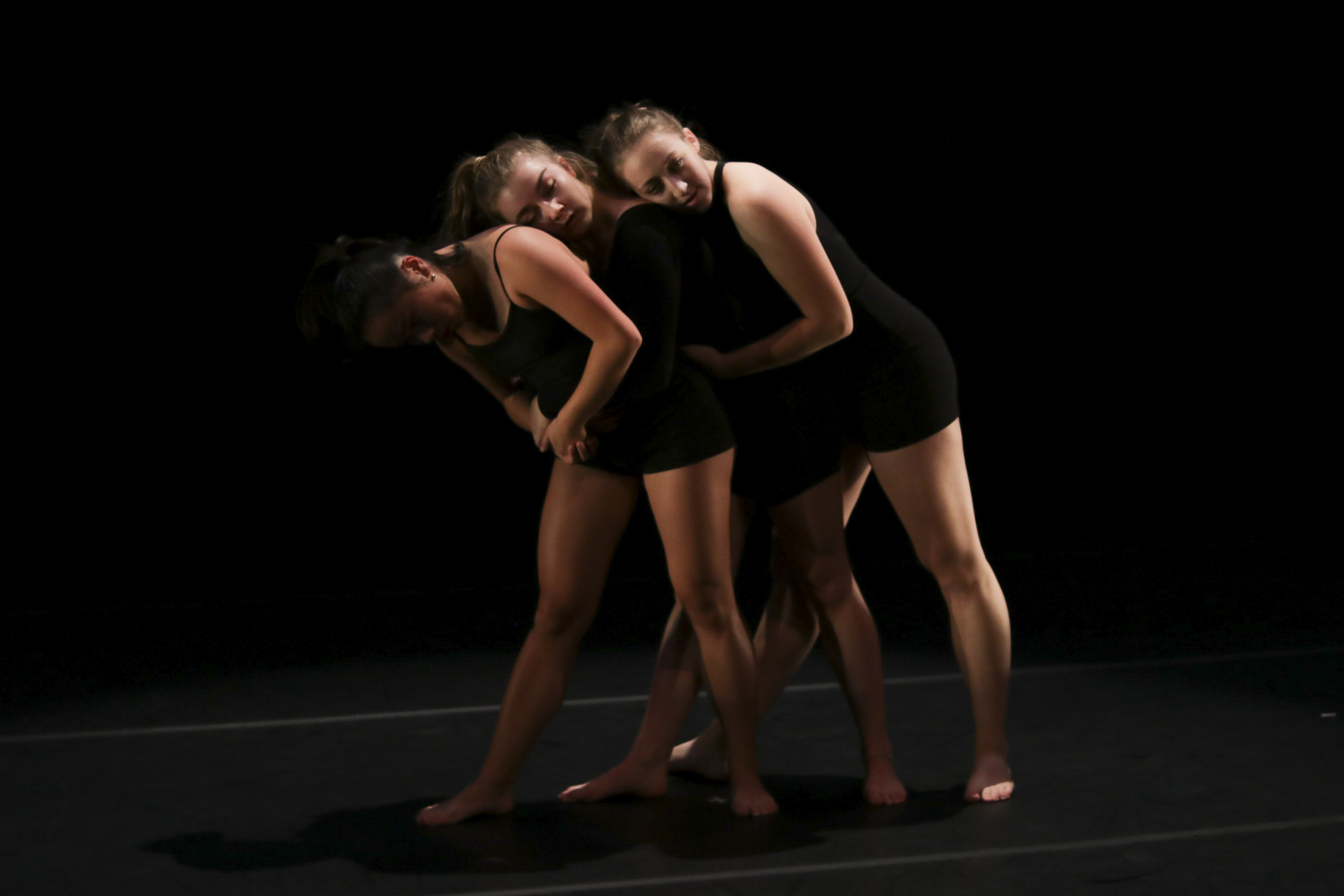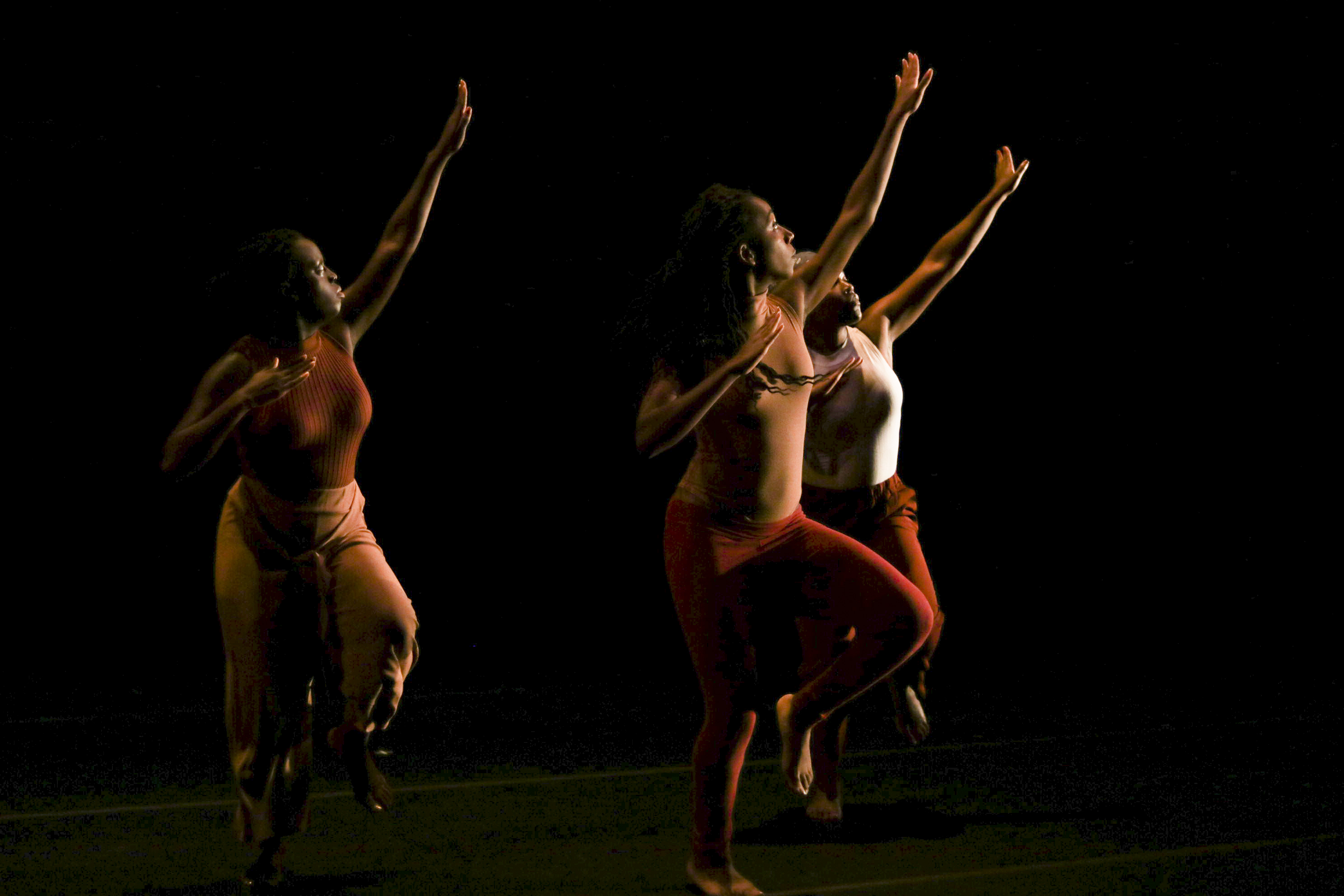Last weekend, Amira Chambers Ottley ’18 and Rachel Davis ’18 presented their senior dance theses in three evening performances. The residual sugar rush in the air from last week’s Halloween festivities lingered in the captivating performances of these artists: waves of students and professors packed the Patricelli ’92 Theater to witness efforts that materialized from months of research, dedication, and sweat.
Shortly after 8 p.m., the lights dimmed down, illuminating a sparse stage with a bundle of spare shoes hanging by their laces from a black beam. The shoes, in conjunction with an urban backdrop, set the audience in a city atmosphere. Choreographed by Ottley, this opening piece, titled “Only We Know,” featured performers Makari Chung ’20 and SeArah Smith ’21.
The multi-act piece began with a voice recording: “Friday night dances were my shit.” Immediately, the three dancers moved across the stage, wearing washed colors of red and yellow on loose clothing. Their wardrobes suspended in the air as the dancers began a sequence of synchronized stomping, tapping, and clapping movements.
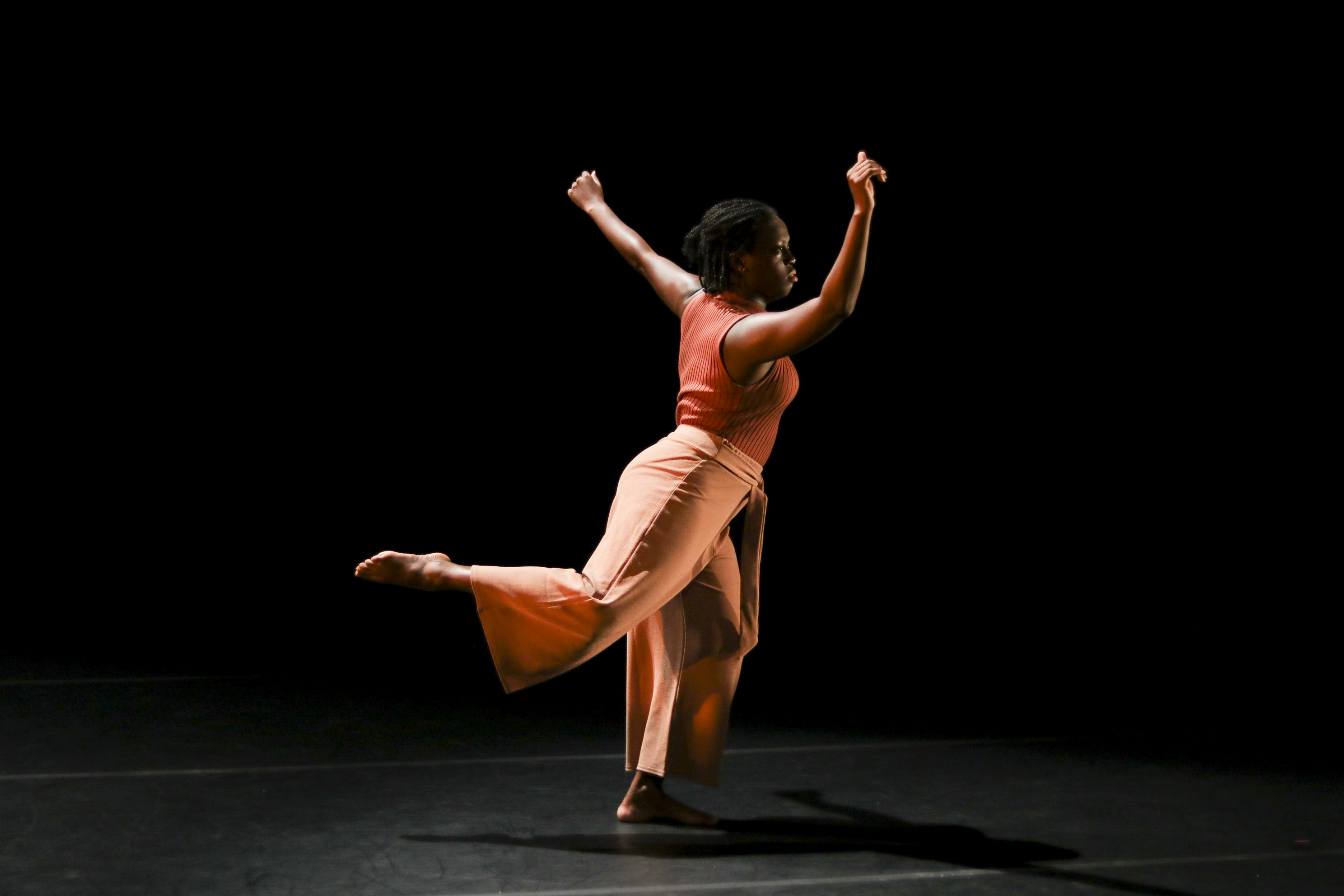
c/o William Halliday, Photo Editor
A soundtrack of a constant beating drum was present throughout the piece, just apparent enough to complement the sounds of hands and feet thumping various surfaces. The joint rhythms occupied the theater, creating one harmonic organism between the three dancers and the beating drum. These sounds, along with the abrupt and sharp movements, projected emotions of tension and force.
These tensions were entirely fitting, for Ottley’s intent was to present Black social dance, historically, and culturally, as a form of resistance. Stepping and stomp dancing were both social dances that Ottley wanted to display because of their associations with Black culture and its history. She explained in an interview that she values resistance as both an intense historical struggle and a celebration of creativity. Suitably, then, the performance’s focus shifted from one of concentrated clout to one of celebrated joy.
The dancers began to move across the stage in a dynamic manner, with balanced movements and suspensions that resembled the ocean’s waves pushing and pulling into shore. After a few minutes, an aural transition into a soundtrack including music by Sango, Beyoncé, and Barbara Tucker marked a tonal shift in the piece’s development.
“I wanted to stay true to music that has been circulating in the community and, for me, if there’s a way to incorporate Bey into my art, I’ll find it,” Ottley said.
The dancers took their audience on an enthralling journey, illustrating Black resistance in a stern, yet empowered, and even sometimes whimsical manner.
“US,” the second and final piece, was choreographed by Davis and performed by Anna Krotinger ’19 and Maddy Paull ’19. The piece is an attempt at illustrating Davis’ continued research on Cold War cultural diplomacy. It exuded a particular emotional delicacy, articulating an insatiable longing for something that was initially obscure to the audience. The mystery was made even more alluring by the striking sound effects of a heartbeat and a metronome.
“During the Cold War, the Soviet Union painted the U.S. as barbaric and materialistic,” Davis explained.
Stripped-down music and the absence of flashy costumes fittingly characterized the piece, pushing back against the propagandistic images of an ostentatious, materialistic United States. The three dancers appeared on stage in simple black tights and tank tops.
I was drawn to the emotion of the piece after the first metronomic beat. The movement was a subtle dichotomy between modern dance and ballet. In the brief, reoccurring moments of silence in between clicks, I could hear the heavy breathing projecting from the dancers. I could feel the emotive body language. It gave me a sense of compassion with the stage.
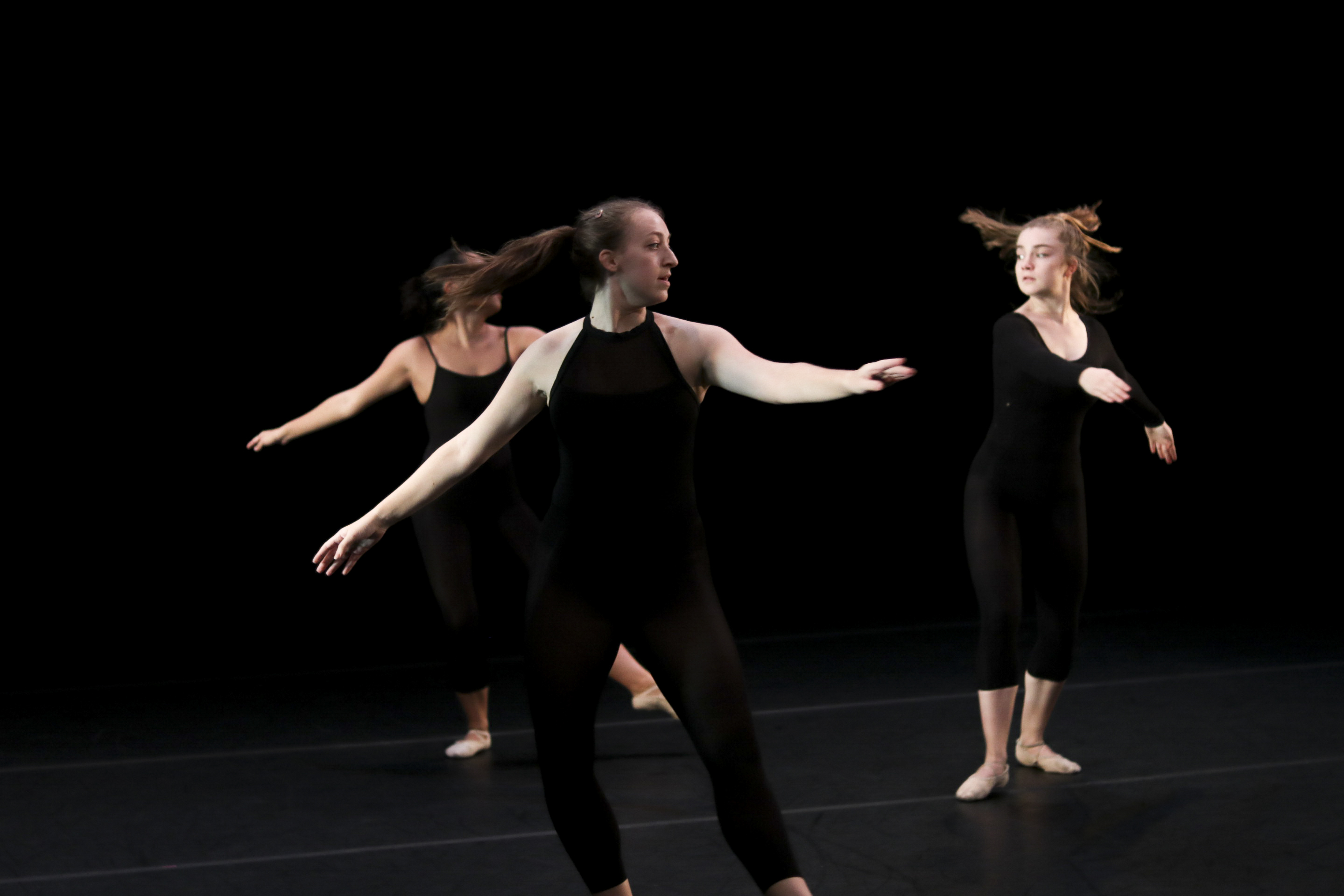
c/o William Halliday, Photo Editor
But perhaps most notably, the piece was inventive in its narrative. It was telling a story. The angelic suspensions and poised chasses in the foreground of these stress-induced sounds made for a gripping contrast. It was original and kept the audience engrossed in deciphering its message until the curtains closed.
And the message was made clear in the performance’s final moments. The movements took a sudden halt, and a black screen was projected across the stage with a message that read: “US is unfinished due to lack of government funding.” Beneath it appeared a link to the NEA’s (National Endowment for the Arts) website to donate to its cause, to which the audience responded with affirmative applause.
“The devaluation of the arts from the Trump Administration is unacceptable,” Davis said after her performance. “During the Cold War, President Eisenhower created an international fund to send dancers abroad in order to combat the Soviet Union’s portrayal of the United States.”
Davis wanted to emphasize the importance of learning from this history and the importance of bringing the value of the arts back into the foreground of today’s national agenda.
“The arts comprises only 0.2% of the federal budget,” she said. “You can sit here and analyze my piece, but we must do something tangible to keep these opportunities [for art] alive.”
Lauren Goetzman can be reached at lgoetzman@wesleyan.edu.
- c/o William Halliday, Photo Editor
